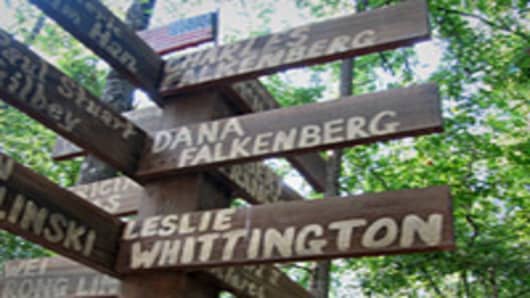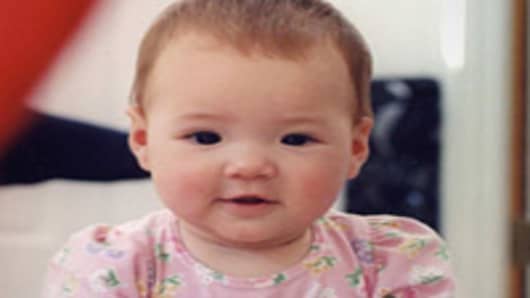John Grove, deputy chief of the local fire department, escorted a piece of World Trade Center beam back to his hometown of Hummels Wharf, Penn., in May. The four-foot steel will become the centerpiece to a local memorial and will be dedicated to firefighters on the 10th anniversary of 9/11 terror attacks.
“[The steel] is rusty and badly twisted, just exactly what you want, it gives you a feeling of history,” says Grove.
Although no one from Hummels Wharf (population 4,000) was among the 2,752 people who perished in the tragic events of 9/11, Grove still thinks the memorial will be of great significance to the community.
“We’ve been losing the idea to volunteer and to help our neighbors," he says. "It’s time to sit down to recognize that."
Ten years later, 9/11 memorials as such are still being built around the country. There are already an estimated 700 of them.
From Ground Zero in New York City to“Recovering Equilibrium” at LAX airport in Los Angeles—the destination of three of the doomed planes—there are now about 700 9/11 memorials in the U.S. Most of them are in New York, New Jersey, Massachusetts, and Connecticut—the home states of most of the victims—according to Voices of September 11th, an online archive that documents 9/11 memorials and stories.
“The national memorials memorialize and also educate people about 9/11, the community memorials provide a place for people to gather as a community, to connect with one another, so it is a very important healing process,” says Mary Fetchet, founding Director of Voices.
The memorials come in all shapes, forms and sizes: gardens, labyrinths, statues, plaques, lake benches, portrait paintings and so on.
And a number of them incorporate World Trade Center materials.
The Port Authority of New York and New Jersey has been storing the remnants of the twin towers in a hanger at JFK International Airport since 2001, at a cost of $10 million.
Not long after, the agency started to receive informal inquiries for WTC steel; after the sponsors of the 9/11 Memorial had their pick, the organization decided another meaningful use of the material would be to give it out to the public — on the condition the steel be used for nonprofit purposes and the site be open to the public.
"That is why we decided not to melt it down," says Steve Colemen, spokesman for the Port Authority of New York and New Jersey.
All of the materials are expected to be picked up by the 10th anniversary, when most of the memorials using World Trade Center materials will be dedicated. Some 1,500 requests were received, with 1,117 of them filled on a first-come, first-serve basis.
More than half of the recipients are fire departments — something Deputy Chief John Grove attributes to the closeness among firefighters (343 firefighers and paramedics died on 9/11).
“Firefighting is a brotherhood," says Grove. "When one of us dies in the line of duty, it affects all of us.”
Although the majority of memorials were funded by government or non-profit organizations, some are the work of individuals and small groups of people.
Bob and Nancy Hart built a two-acre memorial trail on their wooded property in Athens, Ga. Their "9/11 Memorial Garden and Trail" features 99 poles hand-painted with all the victims' names that mark a meandering path through the woods.
The names are purposefully arranged in random order, emphasizing the individuality of each person. The memorial is open to the public and took the couple six months and $6,000 to complete.
“I'm just glad I was able to do something that seems to matter to everyone who visits the Trail,” says Bob Hart, “I cried quite a bit while building the Trail, especially every time I erected one of the 99 markers, but I probably cried the most the first time I saw the bouquet of flowers the Kochs left.”
George and Ruth Koch lost their daughter, son-in-law, and two granddaughters on 9/11 — the most people from any one family killed in the terror attacks.
Among the memorials built in memory of individuals is one to remember the youngest victim of 9/11.
Kids from the Old Academy Nursery inEaston, Conn., planted a Seven Sons Flower Tree — a rare variety that blossoms in September — on the school lawn in memory of Christine Hanson. The two-and-a-half year old girl was en route to California for vacation with her parents when their plane crashed.
For Christine’s grandfather, Lee Hanson, the tree is a sweet memory of the time he and Christine spent together.
“I used to take her to the Church Nursery School to ride on the swings and slides. She loved it and I enjoyed the time with her,” he says. “When the Nursery school parents wanted to plant a tree for Christine, we were delighted.”
Big or small, the memorials of 9/11 are both personal and public objects, places where people can mark the past or continue their healing.
(See slideshow.)“As we approach the tenth anniversary, there are many mixed feelings for the families of victims, for heroes who pulled people from ruins, and for the nation who watched it unfold,” Ellen Saracini, executive director of the 9/11 Garden of Reflection, told CNBC.com. “Sadness and grief are tempered by hope and pride, terrorism took from us many loved ones, but did not kill our spirit nor steal our freedom.”
(Editor's Note: Send us a photo of a memorial where you live and why it says something important about the 9/11 tragedy. Click here for details)





